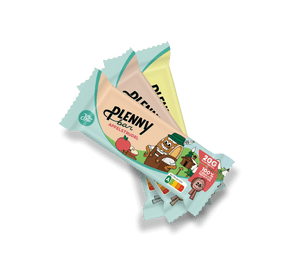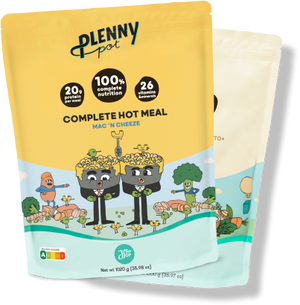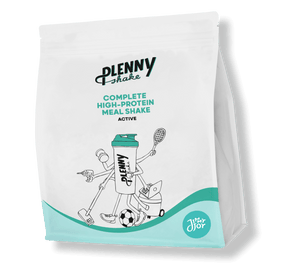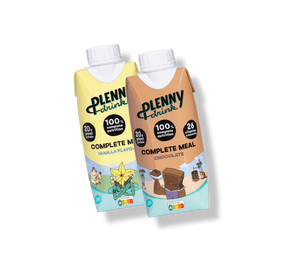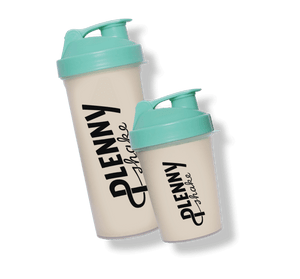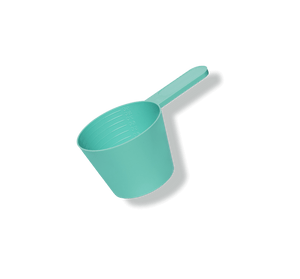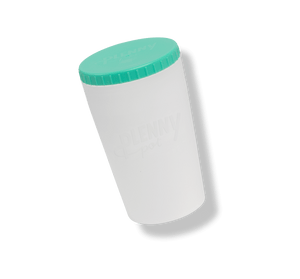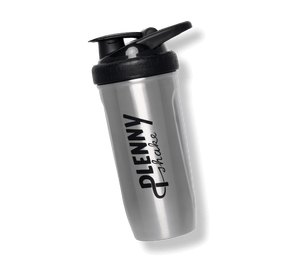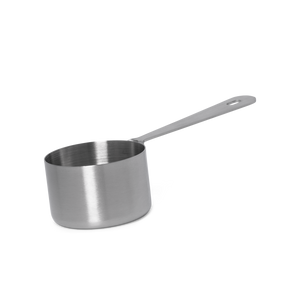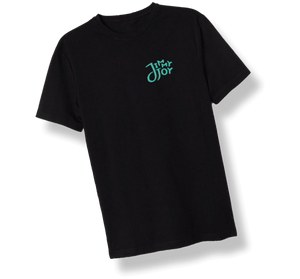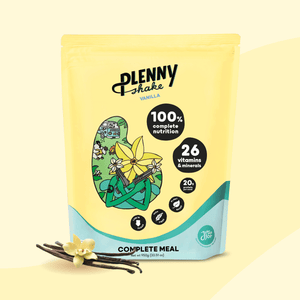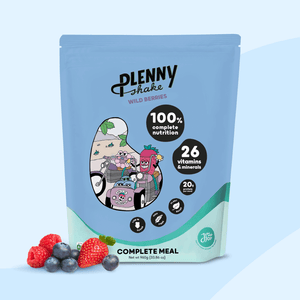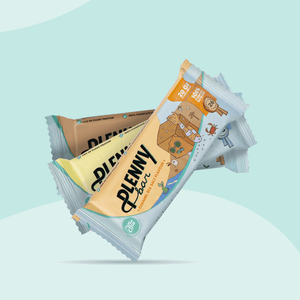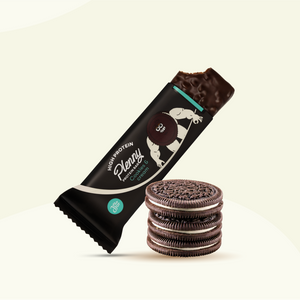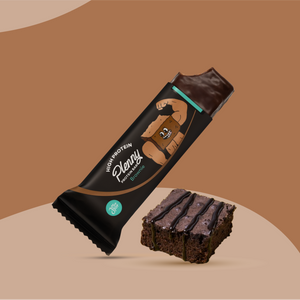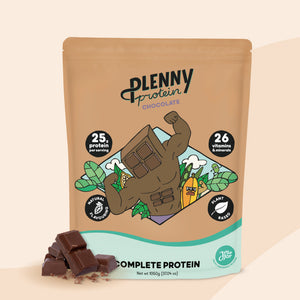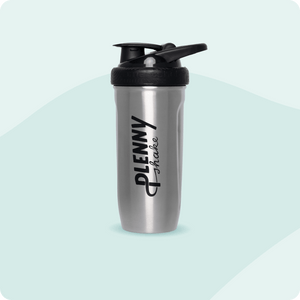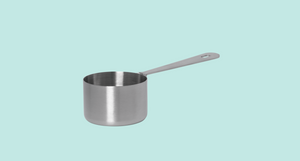Updated on May 22nd, 2024
More than 100 trillion symbiotic microorganisms live on and inside your body [1]. Sounds creepy huh? But it’s not! In fact, when you treat them well, they contribute to a healthy lifestyle. How does that work? This article will tell you all about it! Plus everything about:
- The gut microbiota
- Prebiotics
- Probiotics
- Pre- and probiotics and Jimmy Joy

What is the gut microbiota?
The gut microbiota is the totality of microorganisms, of which bacteria are the most studied ones. They are present in the gastrointestinal tract (GIT) and crucial for human health [2,3]. The gut microbiota plays an important role in the absorption of nutrients and minerals, the production of short-chain fatty acids (SCFAs) and the synthesis of enzymes, amino acids and vitamins [2]. It may sound as if we should embrace all bacteria in the gut, but some bacteria may cause disease instead. So, what is a healthy gut then?
When we speak about gut health, this indicates the perfect balance between the ‘good’ and ‘bad’ microorganisms in the GIT [2,4]. In other words: a lack of beneficial bacteria can make room for the overgrowth of harmful ones. But no worries, this also works the other way around! Bacteria such as Peptostreptococcus, Bifidobacterium, Lactobacillus and select species of Clostridium can inhibit the growth of harmful bacteria and promote a healthy gut [5,6]. Did you know that nutrition is considered to be one of the main drivers in shaping the gut microbiota across the lifetime [4]? Two components of our diet can positively influence this, namely pre- and probiotics.

The role of prebiotics
Prebiotics are defined as “A substance that is selectively utilized by host microorganisms providing a health benefit [7].” In other words, prebiotics are a collective term for substances such as indigestible carbohydrates and fibres that feed our beneficial microbiota. Foods such as whole grains and fruit contain high amounts of prebiotics. [3,8]
What do they do?
All kinds of prebiotics have one thing in common: they cannot be digested and absorbed directly by our body. This means they stay intact throughout the first part of the digestive tract. Until they reach our colon! Here, prebiotics interact with the intestinal flora. Prebiotics are fermented and used as fuel by the beneficial bacteria in our large intestine. As a result of this process the beneficial bacteria in our gut produce substances that acidify the large intestine [9]. An acidic environment is beneficial for the growth of these bacteria and inhibits the growth of the harmful ones! [8, 9]
The role of probiotics
The World Health Organization defines probiotics as “Live microorganisms which when administered in adequate amounts confer a health benefit on the host”. Despite the fact that probiotics are fairly new, no health claims have been approved, yet! Many scientists are researching this field where more promising results are likely to follow in the near future. [10]
What do they do?
As mentioned earlier, beneficial microorganisms can inhibit the overgrowth of harmful ones. This is exactly where probiotics come in handy. In addition, probiotics have their own individual health benefits that may vary per family and strain. This range of benefits includes reducing the symptoms of digestive disorders, improving nutrient breakdown and absorption, weight loss, enhancing gut health and promoting immune health [2].
Although live microorganisms might sound a bit scary, probiotics are not entirely new to our bodies. Most are similar to the microorganisms naturally occurring in our bodies, such as the earlier mentioned Bifidobacterium and Lactobacillus [5,10]. These species are also found in some foods such as sauerkraut, yoghurt and kimchi [11]. However, not every microorganism is suitable to use as a probiotic. The most important characteristics of probiotics are that they should be able to reach the GIT alive, be resistant to technological processes like heat treatment, and stay stable in acid and bile [12]. One type of microorganism that ticks all those boxes is Bacillus coagulans.
B. coagulans is a lactic-acid-producing bacterium, for which they support digestion and the immune system, and inhibits growth of bad bacteria [12]. Unlike Bifidobacterium and Lactobacillus B. coagulans is spore-forming [8, 13]. This results in the ability to survive heat and gastric acid and reach the small intestine intact. Because of these beneficial effects, this bacterium is currently produced by multiple companies in numerous variations.
Pre- and probiotics and Jimmy Joy
At Jimmy Joy we are committed to bringing you the healthiest meal scientifically possible. And keeping your gut healthy is an important part of that. By adding both pre- and probiotics, a so-called synbiotic effect is achieved: The prebiotics can be used as a fertilizer for the probiotics [14]. So, let’s find out how we keep your gut happy!

Prebiotics
The prebiotics we use in our products mostly originate from inulin, oats, soy and flaxseed (some meals contain fruit and veggies that also contribute). Let’s have a look into why we chose these sources.
Inulin
We add inulin because it serves as a direct food source for some of the good microflora in your gut. They help you stay healthy by leaving less room for the bad bacteria to grow. Inulin also helps in weight management and enhances mineral absorption [15, 16, 17].
Oats
Oats are the main ingredient in our Plenny meals (except for the Plenny Pot), and the main prebiotics in oats are soluble fibres called β-glucans. β-glucans do a lot for you: they don’t just confuse you about how to pronounce their name, they can also reduce your blood pressure and blood cholesterol level [18]. As a result, they can lower the risk of diseases in your heart, which comes in handy if you have a predisposition to get one [19]. On top of that β-glucans help improve the response rate to glucose after meals and thereby has beneficial influence on the glucose metabolism in the body [18].
Soy
We need to have a little chat about an unavoidable side effect of food: poop. The faster the stool leaves the body, the better, because a too slow stool is associated with the production of bad compounds [20]. Soy has lots of insoluble fibres: mainly hemicellulose and cellulose, which are polymers that make up the cell walls of plants [21]. These compounds help increase the weight and volume of your stool. And if you remember Newton and the apple, gravity will get your heavier stools out of your gut faster. It’s like a Formula One race in your bowels, with turds instead of cars. We’re very sorry about this visual.
Flaxseed
Last but not least: flaxseed. Flaxseed is an excellent source of viscous fibres, named after how they form gels when mixed with body fluids [22, 23]. These fibres have a general effect on lowering blood pressure, and as a result they may help reduce the risk of cardiovascular diseases [24]. Like soy fibres, flaxseed also contributes to the Formula One race by increasing the weight and volume of stools [22, 25].
To top it off, all these fibres can convert into SCFAs which make your immune system function better [22, 26].
Probiotics
LactoSpore® is one of the patented strains of Bacillus coagulans MTCC 5856. Although similarities between brands and types ought to be high, LactoSpore® has some specific benefit that stands out. LactoSpore® is a fermentation product from B. coagulans, which contains spores that remain viable until reaching the large intestine [27].
Because of the spores that are formed, B. coagulans is able to survive processing, shipping, and storage in addition to the natural challenges of the digestive tract [28]. Therefore, most of the Jimmy Joy meals (except the Plenny Drink) contain this type of probiotic, to help support your digestion and immune system.
Conclusion
In conclusion, beneficial bacteria in our gut can inhibit the overgrowth of harmful ones and promote a healthy gut. This can be achieved by implementing pre-and probiotics in your diet. Probiotics make less room for harmful bacteria and prebiotics feed these beneficial gut bacteria. For this reason both pre- and probiotics can be found in our meals. Click here to browse our entire product range!
Sources
- Wang B, Yao M, Lv L, Ling Z, Li L. The Human Microbiota in Health and Disease. Engineering. 2017;3(1):71-82. Available from: https://www.sciencedirect.com/science/article/pii/S2095809917301492
- Cresci GAM, Izzo K. Chapter 4 - Gut Microbiome. In: Corrigan ML, Roberts K, Steiger E, editors. Adult Short Bowel Syndrome: Academic Press; 2019. p. 45-54. Available from: https://www.sciencedirect.com/science/article/abs/pii/B9780128143308000044
- Davani-Davari D, Negahdaripour M, Karimzadeh I, Seifan M, Mohkam M, Masoumi SJ, et al. Prebiotics: Definition, Types, Sources, Mechanisms, and Clinical Applications. Foods. 2019;8(3):92. Available from: https://www.mdpi.com/2304-8158/8/3/92
- Thursby E, Juge N. Introduction to the human gut microbiota. Biochemical Journal. 2017;474(11):1823-36. Available from: https://portlandpress.com/biochemj/article/474/11/1823/49429/Introduction-to-the-human-gut-microbiota
- Fijan S. Microorganisms with Claimed Probiotic Properties: An Overview of Recent Literature. International Journal of Environmental Research and Public Health. 2014;11(5):4745-67. Available from: https://www.mdpi.com/1660-4601/11/5/4745
- Zhang Y-J, Li S, Gan R-Y, Zhou T, Xu D-P, Li H-B. Impacts of Gut Bacteria on Human Health and Diseases. International Journal of Molecular Sciences. 2015;16(4):7493-519. Available from: https://www.mdpi.com/1422-0067/16/4/7493
- Gibson GR, Hutkins R, Sanders ME, Prescott SL, Reimer RA, Salminen SJ, et al. Expert consensus document: The International Scientific Association for Probiotics and Prebiotics (ISAPP) consensus statement on the definition and scope of prebiotics. Nature Reviews Gastroenterology & Hepatology. 2017;14(8):491-502. Available from: https://www.nature.com/articles/nrgastro.2017.75
- Markowiak P, Śliżewska K. Effects of Probiotics, Prebiotics, and Synbiotics on Human Health. Nutrients. 2017;9(9):1021. Available from: https://www.mdpi.com/2072-6643/9/9/1021
- Holscher HD. Dietary fiber and prebiotics and the gastrointestinal microbiota. Gut Microbes. 2017;8(2):172-84. Available from: https://www.ncbi.nlm.nih.gov/pmc/articles/PMC5390821/
- Marco ML, Heeney D, Binda S, Cifelli CJ, Cotter PD, Foligné B, et al. Health benefits of fermented foods: microbiota and beyond. Current Opinion in Biotechnology. 2017;44:94-102. https://www.sciencedirect.com/science/article/abs/pii/S095816691630266X
- Marco ML, Sanders ME, Gänzle M, Arrieta MC, Cotter PD, De Vuyst L, et al. The International Scientific Association for Probiotics and Prebiotics (ISAPP) consensus statement on fermented foods. Nature Reviews Gastroenterology & Hepatology. 2021;18(3):196-208. Available from: https://www.ncbi.nlm.nih.gov/pmc/articles/PMC7925329/
- Cao J, Yu Z, Liu W, Zhao J, Zhang H, Zhai Q, et al. Probiotic characteristics of Bacillus coagulans and associated implications for human health and diseases. Journal of Functional Foods. 2020;64:103643. Available from: https://www.sciencedirect.com/science/article/pii/S1756464619305675
- Konuray G, Erginkaya Z. Potential Use of Bacillus coagulans in the Food Industry. Foods. 2018;7(6):92. Available from:https://www.mdpi.com/2304-8158/7/6/92
- Mohanty D, Misra S, Mohapatra S, Sahu PS. Prebiotics and synbiotics: Recent concepts in nutrition. Food Bioscience. 2018;26:152-60. Available from: https://www.sciencedirect.com/science/article/abs/pii/S2212429217308453
- Ciudad-Mulero M, Fernández-Ruiz V, Matallana-González MC, Morales P. Chapter Two - Dietary fiber sources and human benefits: The case study of cereal and pseudocereals. In: Ferreira ICFR, Barros L, editors. Advances in Food and Nutrition Research. 90: Academic Press; 2019. p. 83-134. Available from: https://www.sciencedirect.com/science/article/abs/pii/S1043452619300178
- Shoaib M, Shehzad A, Omar M, Rakha A, Raza H, Sharif HR, et al. Inulin: Properties, health benefits and food applications. Carbohydrate Polymers. 2016;147:444-54. Available from: https://www.sciencedirect.com/science/article/abs/pii/S0144861716303812
- Qin YQ, Wang LY, Yang XY, Xu YJ, Fan G, Fan YG, et al. Inulin: properties and health benefits. Food Funct. 2023;14(7):2948-68. Available from: https://pubs.rsc.org/en/content/articlelanding/2023/fo/d2fo01096h
- Cloetens L, Ulmius M, Johansson-Persson A, Åkesson B, Önning G. Role of dietary beta-glucans in the prevention of the metabolic syndrome. Nutrition Reviews. 2012;70(8):444-58. Available from: https://academic.oup.com/nutritionreviews/article/70/8/444/1854047
- Wouk J, Dekker RFH, Queiroz EAIF, Barbosa-Dekker AM. β-Glucans as a panacea for a healthy heart? Their roles in preventing and treating cardiovascular diseases. International Journal of Biological Macromolecules. 2021;177:176-203. Available from: https://www.sciencedirect.com/science/article/abs/pii/S0141813021003664?via%3Dihub
- Nicola P, Gwen F, Lars Ove D, Tine Rask L, Jeroen R, Henrik MR. Advancing human gut microbiota research by considering gut transit time. Gut. 2023;72(1):180. Available from: https://gut.bmj.com/content/72/1/180.abstract
- Ibrügger S, Kristensen M, Mikkelsen MS, Astrup A. Flaxseed dietary fiber supplements for suppression of appetite and food intake. Appetite. 2012;58(2):490-5. Available from: https://www.sciencedirect.com/science/article/abs/pii/S0195666311006969
- Chutkan R, Fahey G, Wright WL, McRorie J. Viscous versus nonviscous soluble fiber supplements: Mechanisms and evidence for fiber-specific health benefits. Journal of the American Association of Nurse Practitioners. 2012;24(8):476-87. Available from: https://journals.lww.com/jaanp/abstract/2012/08000/viscous_versus_nonviscous_soluble_fiber.5.aspx
- Khan K, Jovanovski E, Ho HVT, Marques ACR, Zurbau A, Mejia SB, et al. The effect of viscous soluble fiber on blood pressure: A systematic review and meta-analysis of randomized controlled trials. Nutrition, Metabolism and Cardiovascular Diseases. 2018;28(1):3-13. Available from: https://www.sciencedirect.com/science/article/abs/pii/S0939475317302223
- Song BK, Cho KO, Jo Y, Oh JW, Kim YS. Colon transit time according to physical activity level in adults. J Neurogastroenterol Motil. 2012;18(1):64-9. Available from: https://www.ncbi.nlm.nih.gov/pmc/articles/PMC3271256/
- Tan J, McKenzie C, Potamitis M, Thorburn AN, Mackay CR, Macia L. Chapter Three - The Role of Short-Chain Fatty Acids in Health and Disease. In: Alt FW, editor. Advances in Immunology. 121: Academic Press; 2014. p. 91-119. Available from: https://www.sciencedirect.com/science/article/abs/pii/B9780128001004000039
- Chen T, Long W, Zhang C, Liu S, Zhao L, Hamaker BR. Fiber-utilizing capacity varies in Prevotella- versus Bacteroides-dominated gut microbiota. Scientific Reports. 2017;7(1):2594. Available from: https://www.ncbi.nlm.nih.gov/pmc/articles/PMC5453967/
- Majeed M, Nagabhushanam K, Paulose S, Arumugam S, Mundkur L. The effects of Bacillus coagulans MTCC 5856 on functional gas and bloating in adults: A randomized, double-blind, placebo-controlled study. Medicine (Baltimore). 2023;102(9):e33109. Available from: https://www.ncbi.nlm.nih.gov/pmc/articles/PMC9982755/
- Adibpour N, Hosseininezhad M, Pahlevanlo A, Hussain MA. A review on Bacillus coagulans as a Spore-Forming Probiotic. Applied Food Biotechnology. 2019;6(2):91-100. Available from: https://journals.sbmu.ac.ir/afb/article/view/23958

 Everything You Need In One Meal
Everything You Need In One Meal
 Stay Full For 3-5 Hours
Stay Full For 3-5 Hours




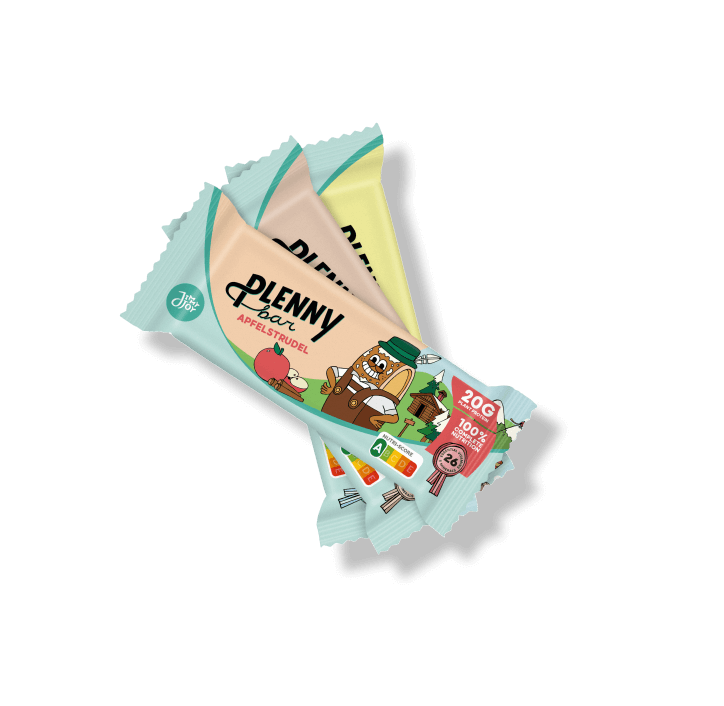


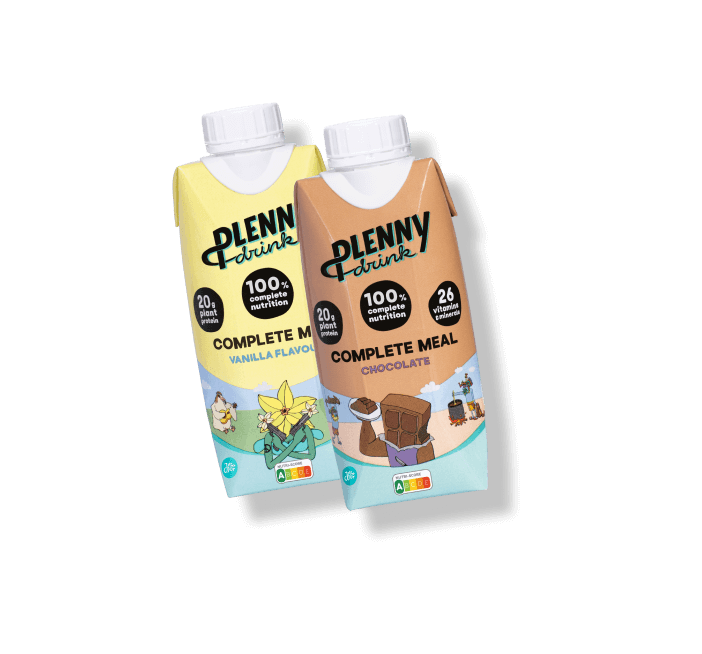
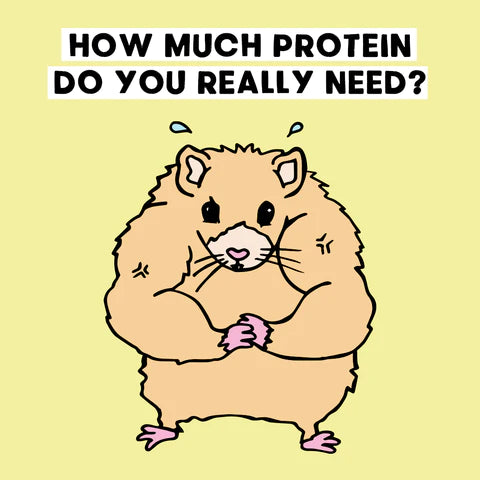

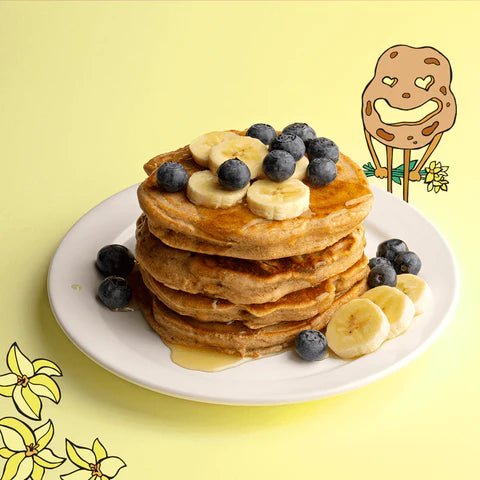


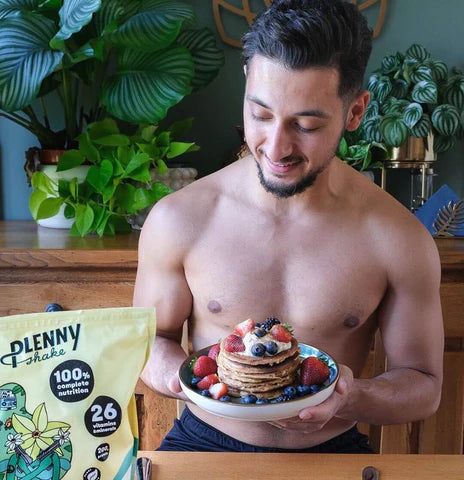


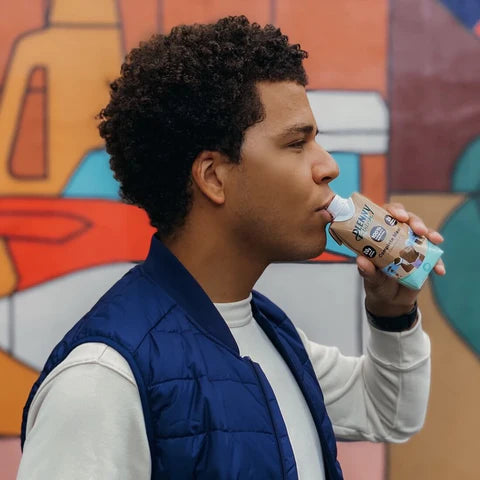

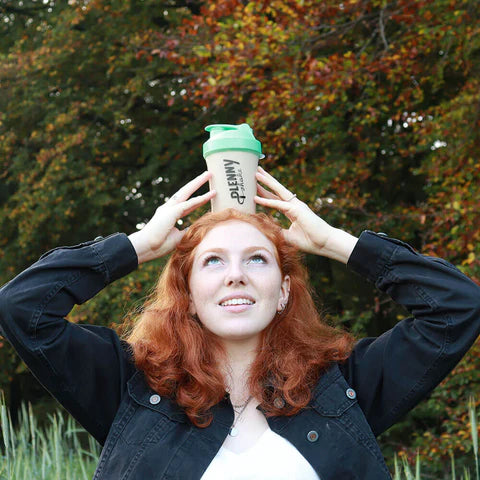

 Product added to cart
Product added to cart


